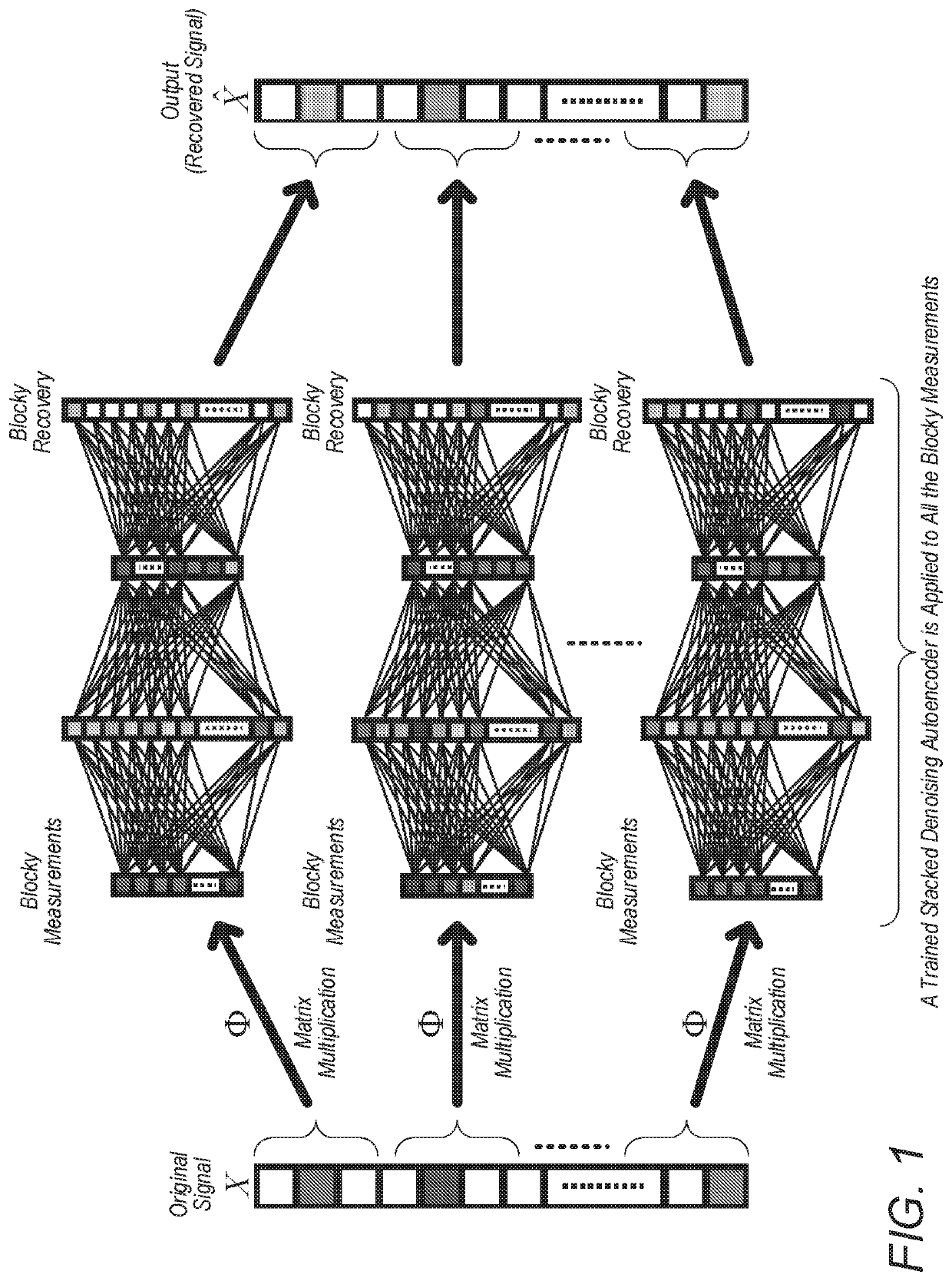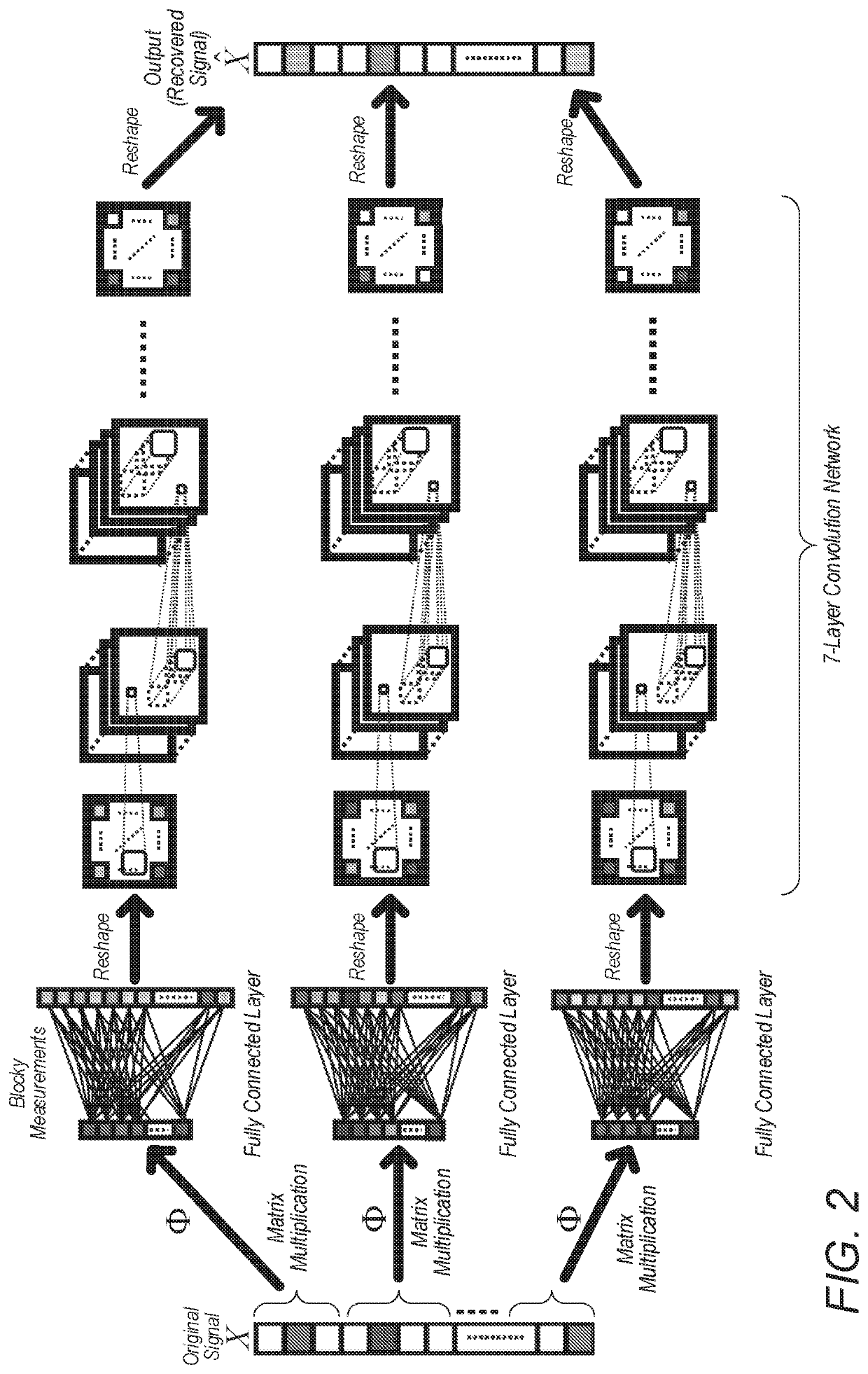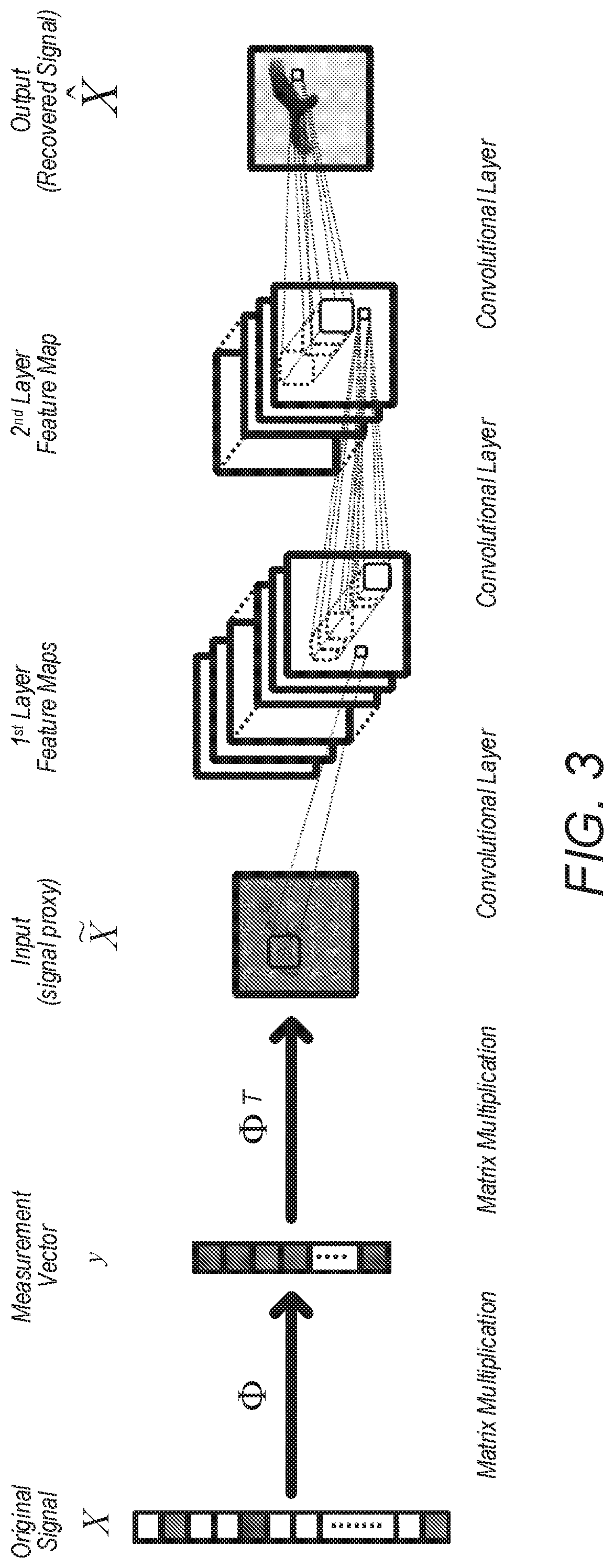Signal Recovery Via Deep Convolutional Networks
a convolutional network and signal recovery technology, applied in the field of compression sensing, can solve the problems of large number of samples generated, overwhelming data volume, and time-consuming task of discovering appropriate transformations for particular images or classes of images,
- Summary
- Abstract
- Description
- Claims
- Application Information
AI Technical Summary
Benefits of technology
Problems solved by technology
Method used
Image
Examples
Embodiment Construction
[0051]There are many important applications of the inversion problem, also called sparse signal recovery, of recovering xϵN from a set of undersampled linear measurements y=ΦxϵM, where Φ is an M×N measurement matrix and M<<N. In other words, sparse signal recovery is the problem of estimating a signal with few nonzero elements from a set of undersampled linear measurements. Recovering the sparsest signal from a set of undersampled linear measurements is considered to be an NP-hard problem; meaning that there is no algorithm with a polynomial runtime that could estimate the sparsest signal corresponding to a set of undersampled measurements. This problem may be ill-posed in general and more particularly, the signal x may be unrecoverable unless the signal has some type of structure such that its dimensionality can be reduced without losing information.
[0052]Compressive sensing (CS) is a special case of this problem in which the signal has a sparse representation, i.e., there exists a...
PUM
 Login to View More
Login to View More Abstract
Description
Claims
Application Information
 Login to View More
Login to View More - R&D
- Intellectual Property
- Life Sciences
- Materials
- Tech Scout
- Unparalleled Data Quality
- Higher Quality Content
- 60% Fewer Hallucinations
Browse by: Latest US Patents, China's latest patents, Technical Efficacy Thesaurus, Application Domain, Technology Topic, Popular Technical Reports.
© 2025 PatSnap. All rights reserved.Legal|Privacy policy|Modern Slavery Act Transparency Statement|Sitemap|About US| Contact US: help@patsnap.com



